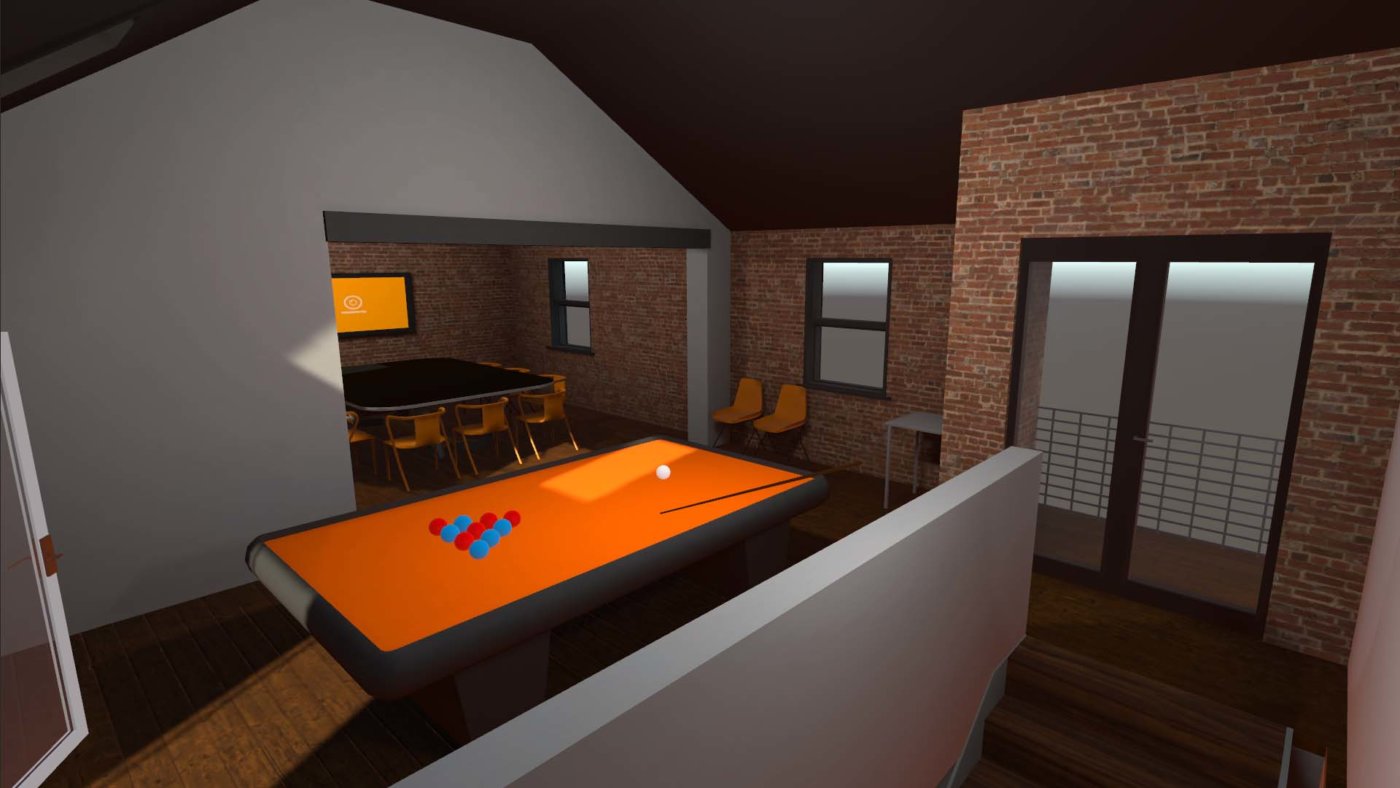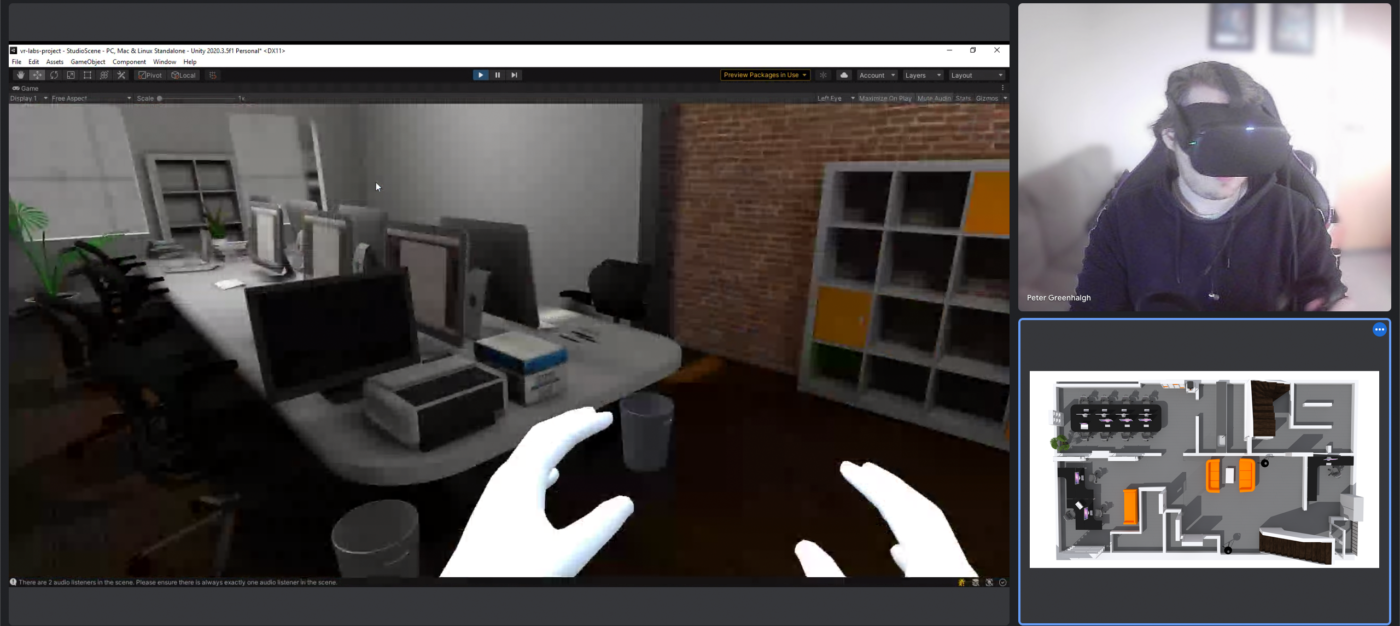Now we’re back in the studio more regularly, it’s given the Corporation Pop team an opportunity to host Show & Tell sessions in person again. Last week’s presentation was about new VR and AR tech some of the team have been working on.
Peter had been experimenting with virtual reality recently — learning more about it, up-skilling and tinkering around under the Unity bonnet. He planned to create a simple VR experience where the player interacts with objects, picking them up and throwing them about. He’d already begun doing this in a basic grey box when someone suggested setting it in Corporation Pop’s studio instead.

Modelling the studio
As it happened, we’d modelled the studio for another project some years ago, so we had a starting point. The 2017 model hadn’t aged well, so Alan, our 3D Artist, grabbed the existing materials and set them up in a new project. He started breathing new life into components by updating things like the finishes of the floors and the iconic Pop sofas. Alan’s next job was to relight the scenes with Unity’s URP, which gave the whole thing a far sharper feel which would work better in VR.

Virtual Reality and Tom Cruise
When Peter got his hands on Alan’s studio model he was able to take his VR learnings and apply them to the new environment. Before we knew it he was picking up coffee cups and chucking them around, then taking us on a tour of both floors of the studio and our roof terrace.
Peter had also been testing the use of his hands in VR instead of controllers, and employing the cameras on the front of his headset to track what his fingers were up to. He demonstrated this to us with a simple bank of eight buttons which, when touched, would change the colour of the environment depending on which one he had pressed.
Now we’re not saying Peter is Tom Cruise (although we’ve never seen the two of them in the same room at the same time) but this kind of gesture-controlled interface is something that was pure fantasy and filmmaking when Minority Report was released in 2002. The real-life application of tech like this opens a lot of doors. The chatter in the meeting room was unsurprisingly pretty excited and full of suggestions how we might use it in the future.

AR Web is the future
James’s presentation was about his work on AR Web and the potential for web-based augmented reality. He’d told us about how he had been using the Babylon XR framework to investigate the application of AR without having to download an app first.
Unfortunately Android still considers web-based AR technology to be experimental and it can be awkward to work with. That being said, James aced it and was able to present a stable prototype to the team.

The little six-sided die we saw on the meeting room table represented the start of a future application of the AR. James envisages the next iteration to be a full workflow. It will start by scanning a QR code which activates an AR session without having to download anything. The AR content will simply appear on a webpage.
Watch this space for more VR and AR tech, and as soon as we get there, we’ll let you know. And, who knows, maybe even share it with you.